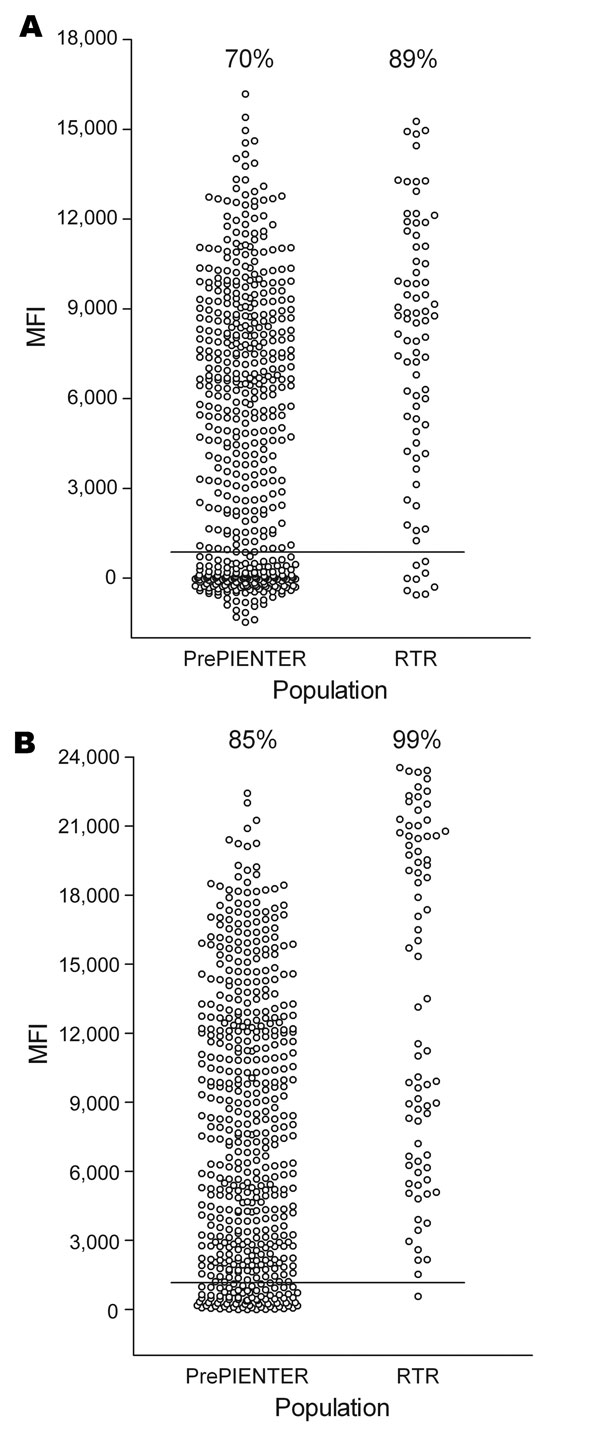Volume 17, Number 8—August 2011
Research
Seroprevalence of Trichodysplasia Spinulosa–associated Polyomavirus
Figure 6

Figure 6. Seroresponses to trichodysplasia spinulosa–associated polyomavirus (TSV) and BKV polyomavirus in healthy and immunocompromised populations, the Netherlands. Serum samples were obtained from 528 healthy persons (PrePIENTER) and 80 renal transplant recipients (RTR) and screened for reactivity against TSV viral protein 1 (VP1) (A) and BKV VP1 (B) by using the VP1 multiplex antibody-binding assay. Each circle represents 1 sample, and horizontal lines represent cutoff values. Percentage values indicate seropositivity. MFI, median fluorescent intensity.
Page created: August 15, 2011
Page updated: August 15, 2011
Page reviewed: August 15, 2011
The conclusions, findings, and opinions expressed by authors contributing to this journal do not necessarily reflect the official position of the U.S. Department of Health and Human Services, the Public Health Service, the Centers for Disease Control and Prevention, or the authors' affiliated institutions. Use of trade names is for identification only and does not imply endorsement by any of the groups named above.